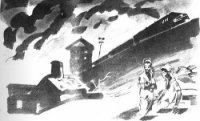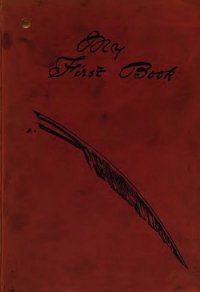Operation Nemesis: The Assassination Plot that Avenged the Armenian Genocide - Bogosian Eric (мир книг .txt) 📗
The Ottoman prize consisted of three parts. The first was control of the highly strategic port of Constantinople and the Bosphorus straits, of vital importance to the Russians. Second were the regional territories: France wanted the Lebanon-Syria-Cilicia region; Greece desired the Aegean Islands, the adjacent littoral, and Smyrna; and the Armenians wanted eastern Anatolia, the so-called “six vilayets” constituting an Armenian “homeland” as well as Cilicia on the Mediterranean coast. The third piece was control of raw materials, particularly the Mesopotamian and Arabian oil reserves. These were claimed by Britain along with a pipeline partnership with France. The remaining portions of the empire—the Balkans, Thrace, Egypt, Libya—had already broken free of the Ottoman orbit.
As the war was winding down, Prime Minister Lloyd George, a great champion of the Greek nation, encouraged the former Ottoman possession, which had been independent from Turkey since the early nineteenth century, to invade the Turkish lands along the coast in an attempt to “reclaim” its ancient littoral. To the Greeks this made sense, because there still existed large Greek populations in the city of Smyrna, in villages along the coast, and in the Aegean Islands. This ill-considered move would result in the tragic destruction of the city of Smyrna in a devastating fire.
In addition, the war crimes trials gearing up in Constantinople added insult to the injury of defeat. In the spring of 1915, Britain and its allies had promised that when the war ended, those Turks guilty of “crimes against humanity” would be severely punished. Though the newly constituted Ottoman government under Sultan Mehmed had little real power, it objected to foreigners standing in judgment of Turkish nationals and so insisted on holding its own trials. A tug-of-war began between the Ottoman government and the occupying forces. Delays in the trials, and later in the peace talks, gave the Turkish nationalists, most of whom were former members of the CUP, time to regroup. Foot-dragging on every level of the bureaucracy held back any real response to the war crimes, while ex-CUP military leaders led by Kemal strengthened their forces in the east.6
And so the new sultan’s government began its own lengthy series of trials to ascertain the guilt or innocence of the arrested CUP members. Many of the key players (like Talat and Shakir) had to be tried in absentia, as they had fled Constantinople. Others had been arrested by the British and locked up on the island of Malta to prevent their escape. The trials were further hampered by the fact that most evidence of the CUP’s wrongdoing had been either destroyed or hidden by CUP officials in the fall of 1918. (Rumor is that there exists to this day a trunk of evidence secreted in a Swiss bank vault.) The trials relied on the damning witness testimony almost exclusively. Transcripts were published daily in official government newspapers. These clearly indicate that in 1919 and 1920, many members of the non-CUP Turkish elite were highly critical of the CUP, its alliance with Germany, its thuggish tactics, and the destruction of the Armenians. Records of those proceedings would be assiduously hidden and denied by future Turkish governments. All the same, Talat Pasha, Enver Pasha, Djemal Pasha, Dr. Nazim, and Dr. Behaeddin Shakir were sentenced to death in absentia.7
As tensions rose in Constantinople, Tehlirian grew increasingly obsessed with Megerdichian, the quisling who had provided Turkish authorities with the names of Armenians leading to the arrests of April 24, 1915. Hanging out in the neighborhood for weeks at a time, staking out the muhtar’s house, the young Armenian had become a fixture in a small cafe in the neighborhood by March 1919, even trying to get a job there. Though the locals had no interest in taking action against “the traitor,” they were perfectly happy to gossip about his social life and his family. The general understanding was that he was untouchable, protected by the authorities.
According to his autobiography, one night, Tehlirian stationed himself outside Megerdichian’s home and observed a gathering through a large window. He identified Megerdichian as the man leading toasts in the midst of his guests. After debating with himself whether a shot to the heart or the head would be more effective, Tehlirian fired his pistol through the window and watched Megerdichian fall.
Wildly agitated, Tehlirian raced back to his room and lay low. When he emerged hours later, the news of the shooting was on the lips of every Armenian in the community. Apparently Megerdichian had not died on the spot but had been gravely wounded and rushed to a hospital. Tehlirian berated himself for not attempting a head shot. His funk evaporated the following morning when Danielian arrived, shook his hand, and whispered in his ear, “I congratulate you, my brother.” She had visited the hospital where Megerdichian had been taken, and a Greek doctor working there informed her that his days were numbered. The muhtar died the next day.8
Tehlirian had crossed his Rubicon, from anonymous insurgent to assassin. He was twenty-three years old.
In the spring of 1919, as Soghomon Tehlirian was stalking Megerdichian, Turkish nationalists began to push back at the postwar Allied invasion of Asia Minor. Allied forces had failed to secure vast remote territories of Turkey. The Allies never understood that although the CUP leadership had fled Constantinople, the key members were alive and well in every corner of Turkey. Perhaps even more important, the Central Committee—safely in hiding in Berlin, Rome, and Moscow—continued to communicate with mid-level bureaucrats in Constantinople, particularly those who were still free because they could not be linked to the destruction of the Armenians. The British had even tasked some of these hidden CUP sympathizers with creating the successor government to the CUP’s regime. So it was easy to mislead the occupation high commissioners while nationalist forces gathered strength in the hinterlands in order to commence what Enver Pasha would call “the second phase of the war.”9
The nationalists had the will, the manpower, the strategic high ground, and they had resources. In the challenging terrain east of Constantinople, reassembled Turkish military units exhumed caches of weapons that had been hidden years earlier with the specific intention of fostering insurgency should the war be lost. Armenian and Greek financial assets seized during the war had been converted to foreign currencies in Switzerland and the Netherlands and were used to purchase fresh arms for the resistance. The Bolsheviks, hoping to nurture a profitable alliance, had also made big contributions to the Turkish nationalists.
The Young Turks were committed to resuscitating the “sick man,” whatever it took. Rearmed, the nationalists began a guerrilla war against the invading Greeks and whatever remnants were left of the Armenian army, securing as much Turkish territory as possible and creating a vast base from which to operate. These rebel Turkish units were now fighting under several former Ottoman generals. One general in particular, Mustapha Kemal, would in time take command of all the forces and coordinate an unrelenting series of victories. Already famous for successfully leading his men against the British at Gallipoli, Kemal, later known as Ataturk (Father of the Turks), was a born leader of rare genius. His confidence was infectious. Referring to the Greeks, French, and Armenians, General Mustapha Kemal disdainfully predicted, “Just as they have come, so too they will go.”10
The British had underestimated General Kemal, believing he was a supporter of the occupation-sponsored regime. In May 1919, when the British-controlled Ottoman government sent him to quell disturbances in the Samsun region near the Black Sea, the thirty-eight-year-old general switched sides upon arrival and joined the rebel forces. Once he was safely beyond the reach of the British military, Kemal commenced reorganizing the army, throwing what was left of the Turkish forces against multiple fronts: the Armenians in the Caucasus, the Greek army invading the southwest, and the French-Armenian forces invading Cilicia, just north of Syria. The occupation government in Constantinople responded by issuing a warrant for Kemal’s arrest, but it was too late. Kemal and his allies declared that the government in Constantinople was bankrupt, that it no longer represented the Turkish people. They established a new capital, Ankara, and a new government. Furthermore, Kemal declared that the sultan was being held hostage by the West, and because “the shadow of God on earth” represented Islam to millions, he had to be rescued!




